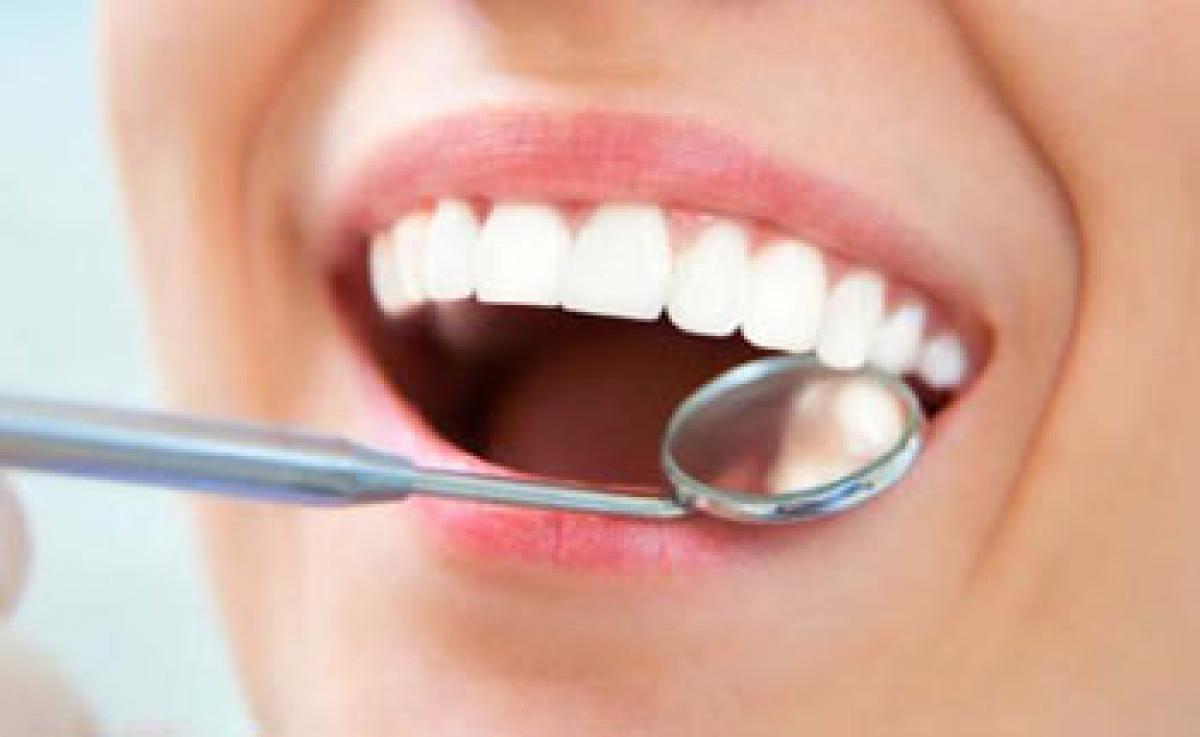Live
- Srikakulam police bust two fake note gangs
- 3 held, 810 kg ganja seized
- Workshop on ‘Live Agri-technologies’ concludes at SPMVV
- Advancing Biomedical Research with NMR techniques
- Key Highlights of India in 2024
- Expose Opposition’s evil propaganda in villages: Seethakka to Cong workers
- MLA Sudhir focuses on amenities at Srikalahasti rly station
- Chittoor police crack down on drunk driving with 963 cases
- Vision document historical, says Keshav
- YSRCP to boycott elections to WUAs
Just In

Graphene oxide could be used to make super strong dental fillings that don\'t corrode, a new study says. The study suggests we chew around 800 times in an average meal, that\'s almost a million times a year. We put our teeth under huge strain, and often require fillings to repair them.
 Graphene oxide could be used to make super strong dental fillings that don't corrode, a new study says. The study suggests we chew around 800 times in an average meal, that's almost a million times a year. We put our teeth under huge strain, and often require fillings to repair them.
Graphene oxide could be used to make super strong dental fillings that don't corrode, a new study says. The study suggests we chew around 800 times in an average meal, that's almost a million times a year. We put our teeth under huge strain, and often require fillings to repair them.
"The idea of the project was to add graphene into dental materials, in order to increase their resistance to corrosion as well as to improve their mechanical properties," said Stela Pruneanu, one of the authors of the study from the National Institute for Research and Development of Isotopic and Molecular Technologies in Romania.
"There is contradictory information regarding the cytotoxicity of graphene, so we first wanted to determine how toxic it is for teeth." Thermally reduced graphene oxide was highly toxic, making it inappropriate as a dental filling material. Nitrogen-doped graphene caused membrane damage at high doses. However, it was shown to have antioxidant properties.
"The results were very interesting and proved that graphene is appropriate for use in dental materials," said Gabriela Adriana Filip, another author of the study and associate professor at the Iuliu Hatieganu University of Medicine and Pharmacy Cluj-Napoca in Romania.
"We believe that this research will bring new knowledge about the cytotoxic properties of graphene-based materials and their potential applications in dental materials," Filip added. (The study findings were published in the recent issue of journal Colloids and Surfaces B: Biointerfaces.)

© 2024 Hyderabad Media House Limited/The Hans India. All rights reserved. Powered by hocalwire.com







